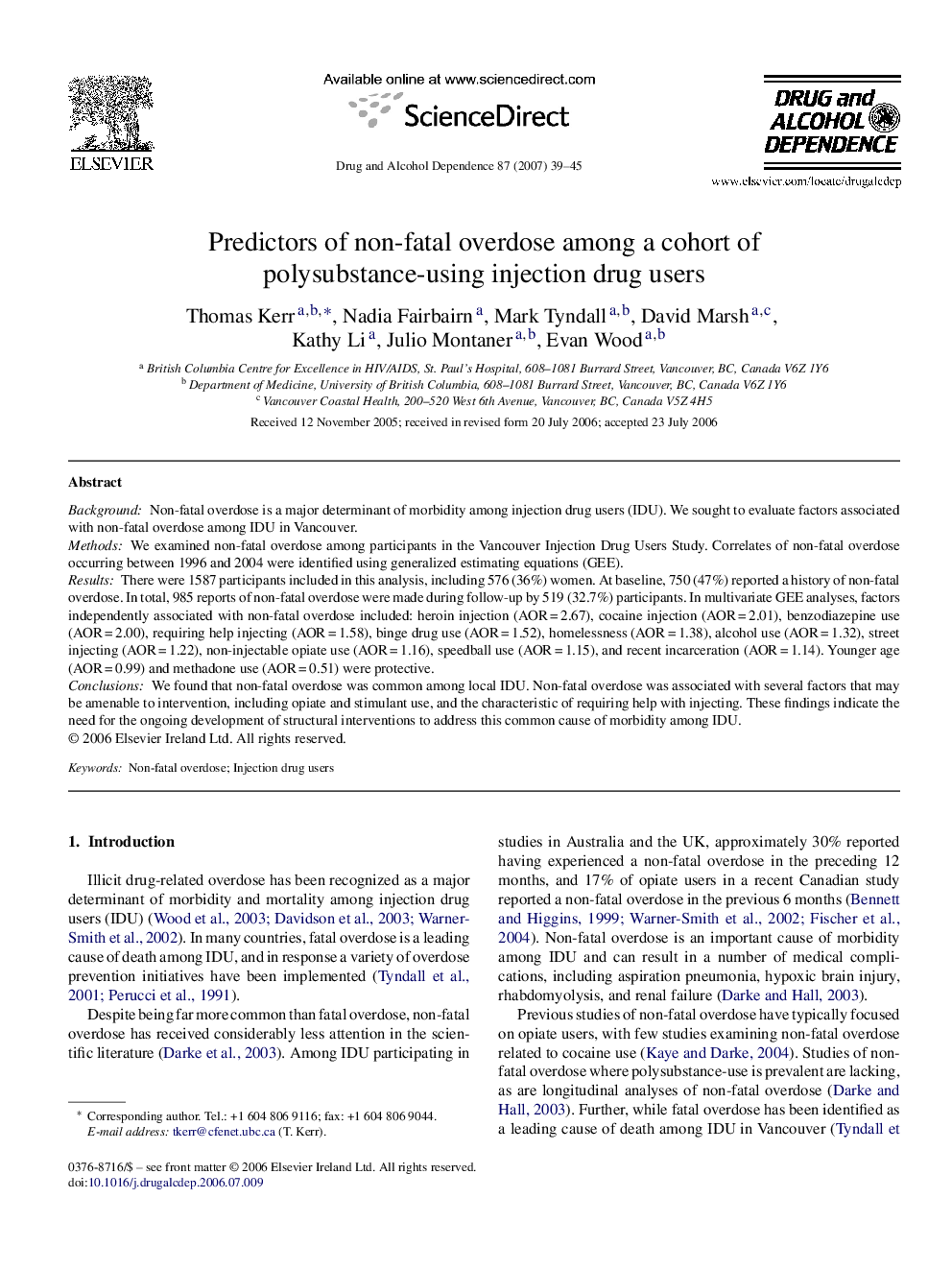| Article ID | Journal | Published Year | Pages | File Type |
|---|---|---|---|---|
| 1071689 | Drug and Alcohol Dependence | 2007 | 7 Pages |
BackgroundNon-fatal overdose is a major determinant of morbidity among injection drug users (IDU). We sought to evaluate factors associated with non-fatal overdose among IDU in Vancouver.MethodsWe examined non-fatal overdose among participants in the Vancouver Injection Drug Users Study. Correlates of non-fatal overdose occurring between 1996 and 2004 were identified using generalized estimating equations (GEE).ResultsThere were 1587 participants included in this analysis, including 576 (36%) women. At baseline, 750 (47%) reported a history of non-fatal overdose. In total, 985 reports of non-fatal overdose were made during follow-up by 519 (32.7%) participants. In multivariate GEE analyses, factors independently associated with non-fatal overdose included: heroin injection (AOR = 2.67), cocaine injection (AOR = 2.01), benzodiazepine use (AOR = 2.00), requiring help injecting (AOR = 1.58), binge drug use (AOR = 1.52), homelessness (AOR = 1.38), alcohol use (AOR = 1.32), street injecting (AOR = 1.22), non-injectable opiate use (AOR = 1.16), speedball use (AOR = 1.15), and recent incarceration (AOR = 1.14). Younger age (AOR = 0.99) and methadone use (AOR = 0.51) were protective.ConclusionsWe found that non-fatal overdose was common among local IDU. Non-fatal overdose was associated with several factors that may be amenable to intervention, including opiate and stimulant use, and the characteristic of requiring help with injecting. These findings indicate the need for the ongoing development of structural interventions to address this common cause of morbidity among IDU.
